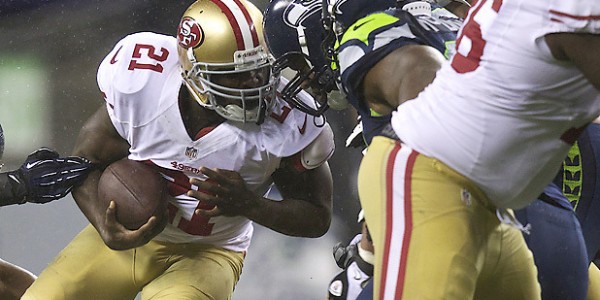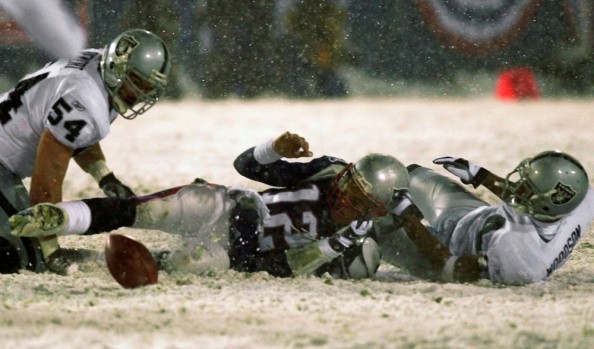As always, the most interesting part of the annual owners meeting is the rules that are voted for, this time six being presented and all of them passing. The two that stand out the most is the abolishment of the infamous Tuck Rule that saved Tom Brady and the New England Patriots in the playoffs against the Raiders 12 years ago, and the controversial crown helmet leading rule, making life a little bit harder for running backs in the NFL.
Other rules that passed were numerical changes after recognizing the H-back as an official NFL position, disallowing the Peel-Back block, a change in what are reviewable and challengable calls and some changes to the way teams can lineup before blocking for field goals and point after attempts.
Crown Helmet Leading Rule
The new rule running backs hate, while everyone on defense is happy to see coming, only if it’s going to show the world how difficult it has become being a “clean” defensive player in the NFL. Basically, it’s pretty simple – Leading with the crown of the helmet is now personal foul by either the offense or the defense. Initiated contact with the crown of the helmet must be outside of the tackle box, which is the space between the tackles back to the offense’s goal line but also the line of scrimmage extended, which reaches past the line of scrimmage three yards into the defense.
The End of the Tuck Rule
Everyone knows Tom Brady fumbled that ball against the Raiders over a decade ago. Now, the NFL has moved on to cancel the Tuck rule, and make the ruling on the matter of forward motion a lot less subjective. A passer’s attempt to bring the football back toward the body after a forward motion as a fumble, not a forward pass. The Raiders know they were screwed, but there’s nothing really they can do about it now.
Booth Reviewable and Challengeable Plays
The officials are not barred from reviewing a booth reviewable play when a coach has illegally attempted to challenge. An illegal challenge is now when a coach throws a challenge flag on a booth reviewable play, which will either be a timeout being taken away from the team or if they’ve run out, a 15-yard penalty.
Blocking and Contact on Field Goals
A rule designed to stop overloading lines before kicks. Now, no more than six players may be on either side of the snapper at the time of the snap, and in addition, it now bans players not on the line of scrimmage from pushing players on the line of scrimmage into the offensive formation. It also means that the snapper on a field goal or try kick is now a defenseless player for purposes of unnecessary roughness – helmet to helmet contact with a snapper who is in the process of snapping would not draw a penalty.
Peel-Back Blocking is Illegal
A Peel-Back block is a player, who at the snap was in the tackle box, leaving the tackle box and then block low toward his own goal line. Some believe that this is just the beginning of more severe anti-blocking rules, like completely taking out blocking in the back.
New Numbers for Tight Ends & H-Backs
Tim Tebow might be getting ready to change his jersey. H-back is now a recognized position in the formation, and will be numbered either 40-49 or 80-89, which pretty much doesn’t change much – full backs are in the 40’s, while Tight Ends were either.


